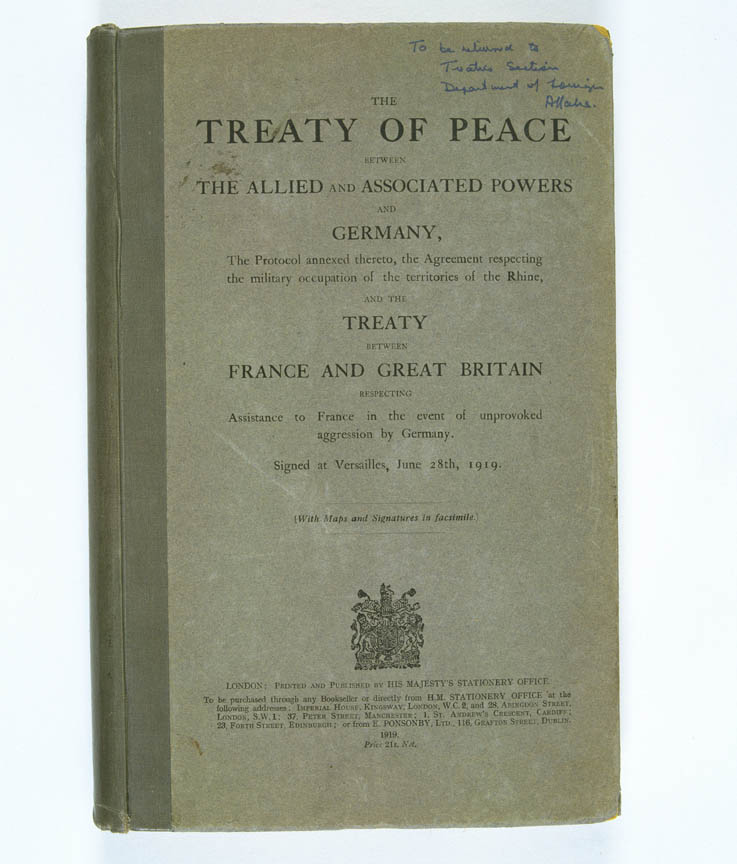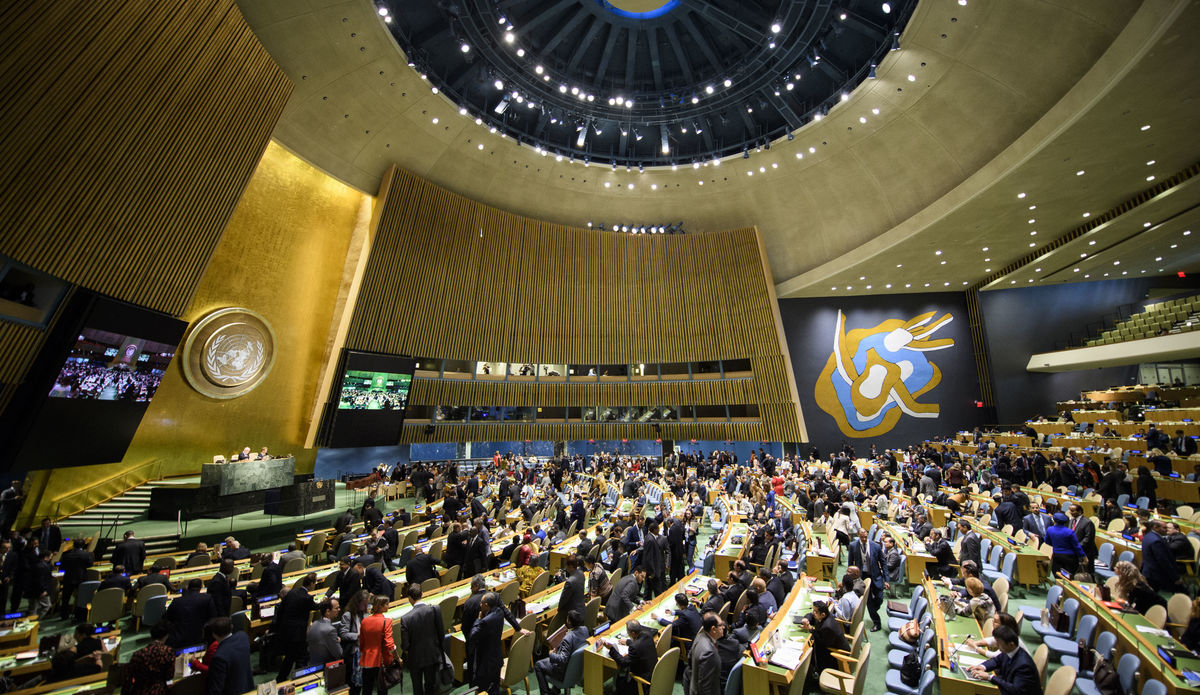
"Treaty of Versailles Front," Museum of Australian Democracy, 1919
"United Nations Flag," United Nations, 2018

"United Nations Meeting," United Nations Peacekeeping, circa 2020

"Treaty of Versailles Front," Museum of Australian Democracy, 1919
The Treaty reminds us that peace must be negotiated by all sides and that the victors should never humiliate or take prized possessions from the defeated nation for peace. Communication in the Treaty centered on imperial tradition from the 1900s, resulting in ethical global communication deficiencies.
The historian, with every justification, will come to the conclusion that we were very stupid men… We arrived determined that a peace of wisdom and justice should be negotiated. We left the conference conscious that the treaties imposed upon our enemies were neither just nor wise.”
- Harold Nicholson, British Diplomat (1919)